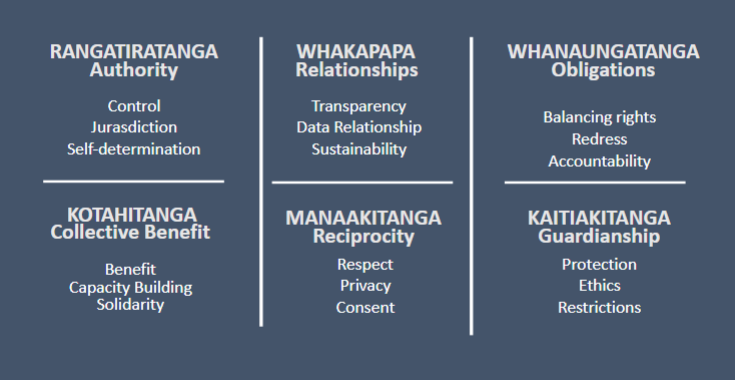Maori Algorithmic Sovereignty
1/15
There's no tags or description
Looks like no tags are added yet.
Name | Mastery | Learn | Test | Matching | Spaced |
|---|
No study sessions yet.
16 Terms
What is Māori Data Sovereignty
Māori data is data produced by Māori or about Māori
or the environments that Māori have relationships
with. Data is a living tāonga and is of value to Māori
example of Māori Data
Data from government agencies, organisations and businesses
• Data about Māori used to describe/compare Māori collectives
• Data about Te Ao Māori that emerges from research
What is Māori Algorithmic Sovereignty
Algorithms that use Māori data, or
are applied to Māori individuals, collectives, or
environments that Māori have rights or interests in,
should be subject to Māori governance structures
Rangatiratanga
Authority
Control
-permission, how it is collected, used and stored
Jurisdiction should be stored/deployed in a way that enhances control, within Aotearoa
Example: using a NZ cloud service (e.g. Catalyst)
where people have opted-in (informed consent) to
their health data being analysed
Whakapapa
Relationships
Transparency- whos involved, deployment, explainability
Data Relationship- how is Maori data used throughout the algorithm
Sustaianability
algorithmic outputs are used for long-
term sustainable benefit to Māori & environment
An indigenous example: the “Pima Indians” dataset was
collected from a long-term study of indigenous peoples
in the USA. Became used as an ML “benchmark
dataset” without any real permission from the Pima
Whanaungatanga
Obligations
-balancing rights and accountabijlity
Kotahitanga
Collective Benefit
-output in future helps Māori or the environment
-Builds capacity, development of a Māori workforce –
empower Māori and learn by teaching (ako)
• Solidarity: supporting connections between Māori
and other indigenous peoples to enable sharing of
ideas, strategies for fair algorithmic development
Manaakitanga
Reciprocity
respect
consent
privacy
Kaitiakitanga
Guardianship
Ethics
Restrictions- Māori should decide if input/output is tapu or noa
Overall 6 groups
—
